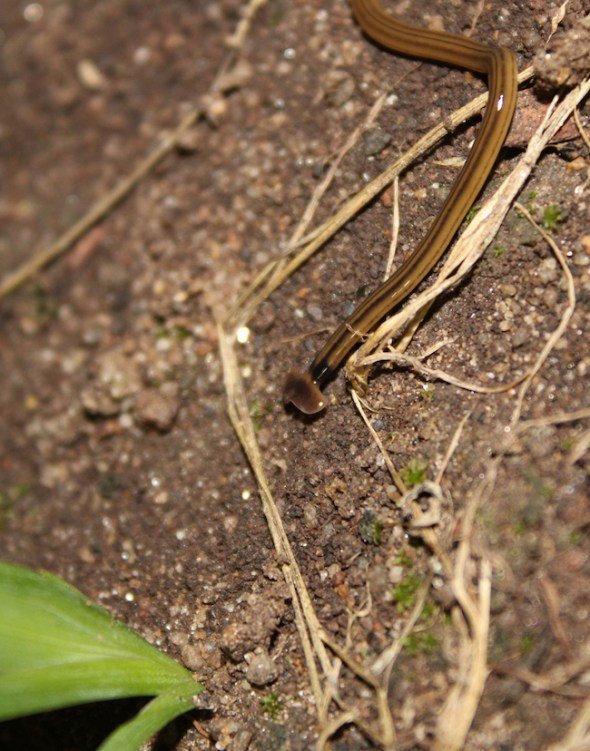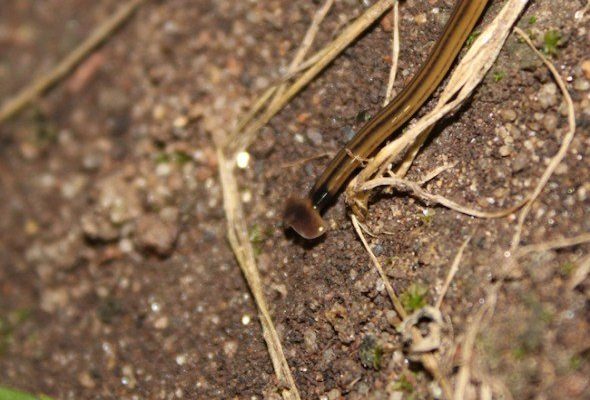
Handling these worms requires caution, tools, and, most importantly, the right mindset. Just like you’d wear protective gloves before digging through a junkyard, you’ll want to gear up before dealing with these slippery little guys. Let’s dive deeper into how to safely handle hammerhead worms, the essential tools you’ll need, and some tips to keep in mind along the way.
What are Hammerhead Worms?
Hammerhead worms are a type of flatworm known scientifically as *Bipalium kewense*. They’re native to Southeast Asia but have made their way to other parts of the world, including the United States. You might find them in damp gardens, under leaf litter, or even creeping around your potted plants. Just to be clear, these worms don’t bite or sting, but they do secrete a harmful mucus that can cause irritation to your skin and eyes. Think of them as nature’s little mischief-makers that just want to explore.
One feature that sets hammerhead worms apart is their unique head shape, which can remind you of a hammer or a shovel, hence their name. They can grow up to a foot long, gliding along the ground in search of prey. Their primary diet consists of earthworms, which makes them a concern for gardeners and farmers alike. Understanding what they are and where they come from is the first step in knowing how to handle them safely.
Why You Should Use Gloves
Gloves might seem like a simple tool, but they play a crucial role in safely handling hammerhead worms. Here’s the thing—those slippery little critters can secrete toxins that may irritate your skin. Using gloves creates a barrier between you and the worm, ensuring that you stay safe while you do your work. Plus, handling them with bare hands can be a bit gross!
When choosing gloves, aim for a pair that’s durable and waterproof. **Latex or nitrile gloves** are excellent choices because they provide a snug fit and aren’t easily penetrated. You might think that a simple gardening glove could do the trick, but those can sometimes absorb moisture and odors, making the task even messier. No one wants to deal with that!
If you’re wondering about the right way to wear gloves, it’s simple. Just put them on before you even think of touching the hammerhead worm. That way, you won’t accidentally forget to protect yourself during the handling process. It sounds silly, but in the moment, you can easily overlook such things.
Essential Tools for Handling Hammerhead Worms
Besides gloves, you’ll want to gather a few more tools to make your handling experience smoother. Here’s a quick rundown of some items that’ll help:
- Plastic Container: Use a small container to safely transport the worm without harming it.
- Trowel or Hand Spade: These tools help gently lift and move the worm from one place to another without causing stress.
- Water Spray Bottle: Hammerhead worms tend to thrive in moist environments. A light mist can keep them comfortable if you’re handling them for a while.
Using the right tools can make all the difference. If you’ve ever tried to catch a slippery fish without the right net, you know exactly what I mean! Having a smooth operation benefits both you and the worm.
How to Safely Handle Hammerhead Worms
Handling hammerhead worms needn’t be a daunting task if you follow a few simple steps. First, always approach the worm slowly and gently. Fast movements can stress them out. If you’re using your trowel or hand spade, insert it carefully under the worm’s body, lifting it with a smooth, steady motion.
Make sure you keep the worm in the container or your chosen tools until you’re ready to relocate it. If you’re moving it to a new spot in your garden or yard, find a place where it’s damp and has plenty of organic material. This way, it’ll have a better chance of thriving in its new environment.
Sometimes, you might notice them being a bit active when you handle them. That’s their natural instinct kicking in! Just remain calm, and if necessary, take a moment to gently mist them with water to keep them happy while you work.
Cleaning Up After Handling
Once you’ve safely relocated the hammerhead worm, it’s time to focus on cleaning up. This is an essential step that some might overlook, but trust me—it’ll save you from any future irritation. First off, make sure to remove your gloves carefully. Turn them inside out as you take them off to keep any potential toxins contained.
After that, wash your hands thoroughly with soap and water, even if you wore gloves. It’s like washing your hands after cooking; it’s just good practice! If you’ve used any tools, like a trowel or container, give them a quick rinse with soap too.
You might even want to do a bit of disinfecting, especially if you’ve been handling multiple worms. A simple spray of a diluted bleach solution or vinegar can help ensure everything is squeaky clean.
Environmental Considerations
It’s important to remember that hammerhead worms, while they may not be your favorite garden guests, play a role in the ecosystem. They can help with pest control but can also disrupt the local soil balance when they become too numerous. If you’re handling them, think carefully about where you’re relocating them.
Try to avoid moving them too far from their original habitat. Releasing them into a completely foreign area can lead to environmental struggles; it’s like trying to find a new home in a strange city without a map! Instead, move them a few feet away to maintain the natural balance.
Also, try not to kill them! While they can be a nuisance in gardens, they also have their place in nature. Finding a humane way to relocate unwanted hammerhead worms benefits both you and your local ecosystem.
Final Thoughts on Handling Hammerhead Worms
Hammerhead worms can be unique, sometimes pesky creatures to deal with. With the right tools, protective gear like gloves, and a bit of knowledge, you can handle them safely and responsibly. Remember, while they might seem intimidating, they’re just trying to live their best worm life!
So, whether you’re a gardener looking to maintain a healthy garden or just a curious nature lover, keep these tips in mind. You’ll be ready to tackle any wormy situation that comes your way. Happy gardening—and may your encounters with hammerhead worms be smooth and safe!

